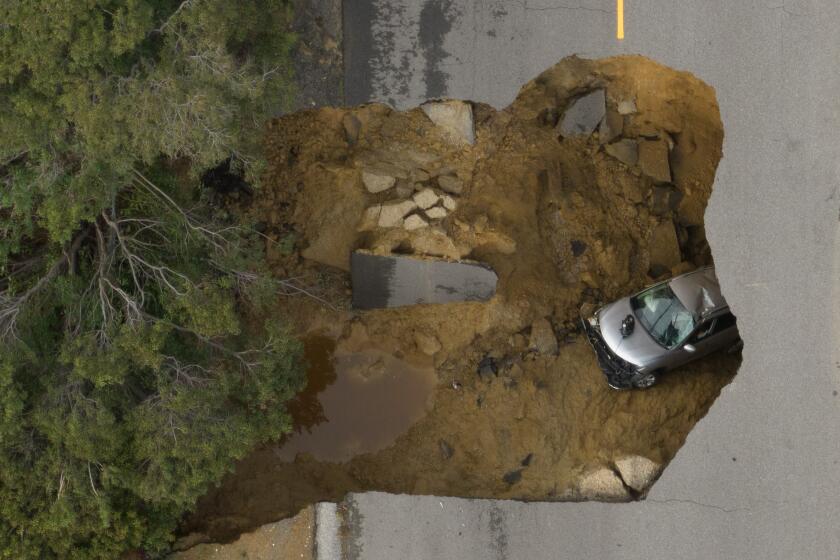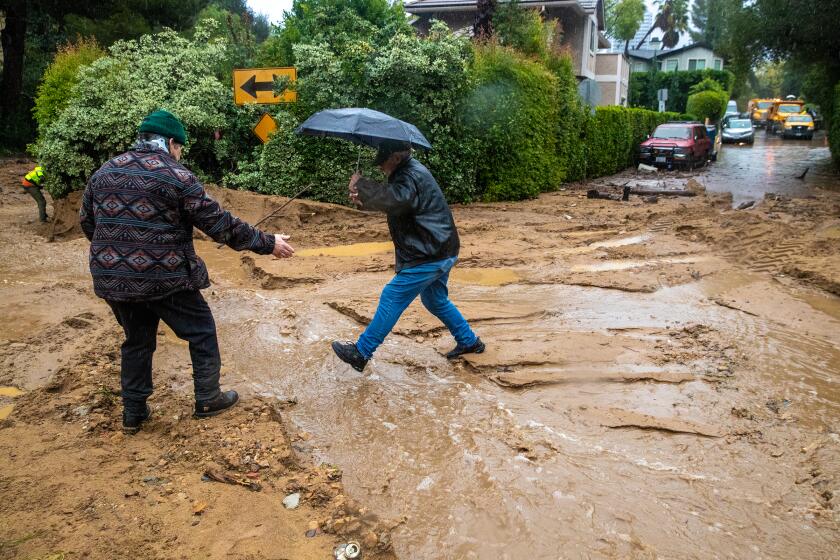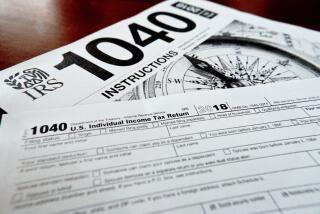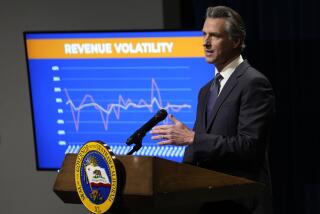Drenched Californians get an extra month to file tax returns
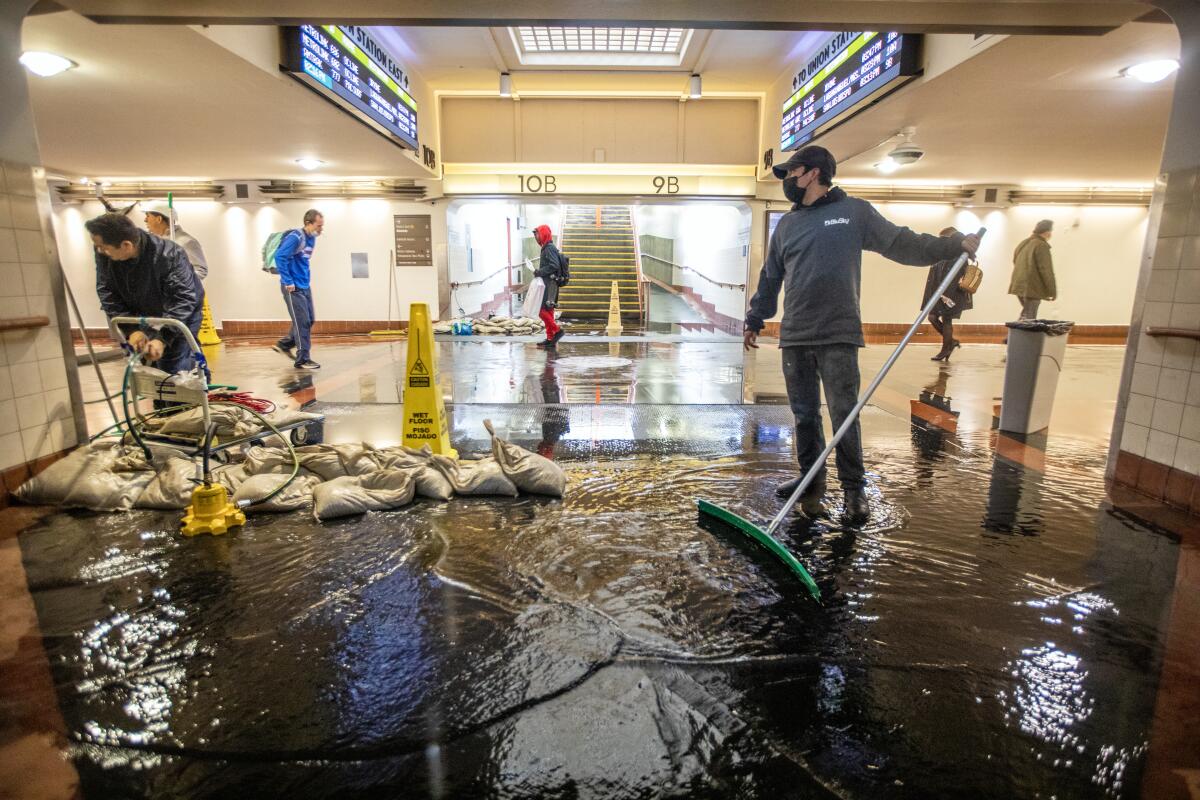
The Internal Revenue Service offered a lifeboat of sorts Tuesday to California residents and businesses floundering in the atmospheric river: More time to pay their income taxes.
And on Friday, Gov. Gavin Newsom announced that the state will follow the feds’ lead.
The IRS announced that taxpayers in any county covered by a federal emergency declaration would have until May 15 to file their income tax returns for 2022. So far, 41 of the state’s 58 counties are in that group, including Los Angeles, Orange, San Diego and Ventura counties; if the declaration is extended to more counties, the IRS will grant them the extra time as well.
The relief will be offered automatically to anyone whose address on file at the IRS is in a disaster area — no need to ask for help or alert the agency that you’ll be filing late. If the IRS sends you a penalty notice anyway because you missed a deadline that should have been waived, the agency advises you to call the number on the notice to have the penalty erased.
The delay to mid-May applies to everything that ordinarily would face deadlines of April 15 or earlier in 2023, including making tax-favored contributions to an IRA or a health savings account.
Even better for businesses and other filers who pay estimated or interim taxes, the payments due in January, March and April have been postponed as well. You can make them when you file your annual return on or before May 15.
The same is true for quarterly payroll and excise tax returns, which ordinarily would be due Jan. 31 and April 30. But payroll and excise tax deposits due Jan. 8 will still have to be made by Jan. 23 to avoid penalties, the IRS said.
Some major roads remain closed because of flooding, rock slides and debris flows, while crews have responded to a significant mudslide in Studio City and a major sinkhole in Chatsworth.
Granted, if you are due a refund, you still want to file as soon as you can. Otherwise, you’re giving Uncle Sam an interest-free loan.
If you live outside the designated disaster area, you can still qualify for the delayed deadlines if you meet any of three conditions: Records you need to complete your return are inside the area (for example, if you’re a shareholder in an S corporation inside the affected area); your tax preparer is inside the disaster area and unable to complete the work on time; or you are helping the government or a recognized charity with relief efforts in the area. But you’ll need to let the IRS know by calling (866) 562-5227.
For the record:
9:28 a.m. Jan. 11, 2023An earlier version of this story included a quote from the IRS that misidentified the FEMA declaration number for the California flooding emergency. The correct number is EM-3591.
One other point: If you suffer disaster-related losses that aren’t reimbursed or insured, you can write them off on your tax return for either 2022 or 2023, the IRS says. “Be sure to write the FEMA declaration number — [EM-3591] — on any return claiming a loss,” the agency advised. IRS Publication 547 can guide you through the requirements.
For more information, consult the Disaster Assistance and Emergency Relief for Individuals and Businesses page on the IRS site.
L.A. County property owners who suffer more than $10,000 in losses may qualify for a property tax reassessment. They may also get a break on penalties for missing the April deadline for paying their property tax bill.
What about California taxes?
The Franchise Tax Board, which oversees state income taxes, says on its website that it “automatically follows the IRS extended deadlines to file/pay taxes until the date indicated for the specific disaster.” It then instructs filers to “Write the disaster name in blue or black ink at the top of your tax return to alert us your return is disaster related.”
Newsom made the policy official Friday, saying the state would hew to the May 15 deadline. “This relief applies to deadlines falling on or after Jan. 8, 2023, and before May 15, 2023, including the 2022 individual income tax returns due on April 18 and the quarterly estimated tax payments, typically due on Jan. 17, 2023, and April 18, 2023,” the governor’s office said.
If you receive a late filing notice after taking advantage of the new deadline, the office said, you should call the phone number on the notice and ask that the penalty be waived.
The FTB will also hold off sending collection notices for 30 days to taxpayers in arrears, the office said.
The California Department of Tax and Fee Administration, which oversees sales and excise taxes and various business fees, is already offering extensions of up to three months to businesses that were affected by the latest round of storms. But unlike the IRS, the CDTFA isn’t granting a blanket extension; instead, its website says, “this relief is offered to any taxpayer who was directly affected by the disasters ... and who, as a result, cannot meet their filing and payment deadlines.”
You can apply for an extension at the CDTFA’s online services site. Log in to your account and navigate to “Submit a Relief Request,” which can be found under the “More” option in the “I want to” pull-down menu. The form is available in English and Spanish. You can also request an extension by calling the CDTFA’s call center at (800) 400-7115 between the hours of 7:30 a.m. and 5 p.m.
If you don’t obtain an extension in time, you can apply to reverse a penalty for a late payment at the CDTFA’s online services site (through “Submit a Relief Request”). Or you can download form CDTFA-735, fill it out with the requested documentation, print it and return it to one of the offices listed on the form.
Newsom reminded taxpayers in affected areas that they can deduct their storm-related losses from their taxes, either on their 2022 or 2023 returns. That’s true for federal tax returns as well. For more information, see the FTB Publication 1034 and the IRS Instructions for Form 4684.
And L.A. County Assessor Jeff Prang says storm damage of more than $10,000 could qualify you for a reassessment that lowers your property taxes.
About The Times Utility Journalism Team
This article is from The Times’ Utility Journalism Team. Our mission is to be essential to the lives of Southern Californians by publishing information that solves problems, answers questions and helps with decision making. We serve audiences in and around Los Angeles — including current Times subscribers and diverse communities that haven’t historically had their needs met by our coverage.
How can we be useful to you and your community? Email utility (at) latimes.com or one of our journalists: Jon Healey, Ada Tseng, Jessica Roy and Karen Garcia.
More to Read
Totally Worth It
Be your money's boss! Learn how to make a budget and take control of your finances with this eight-week newsletter course.
You may occasionally receive promotional content from the Los Angeles Times.
